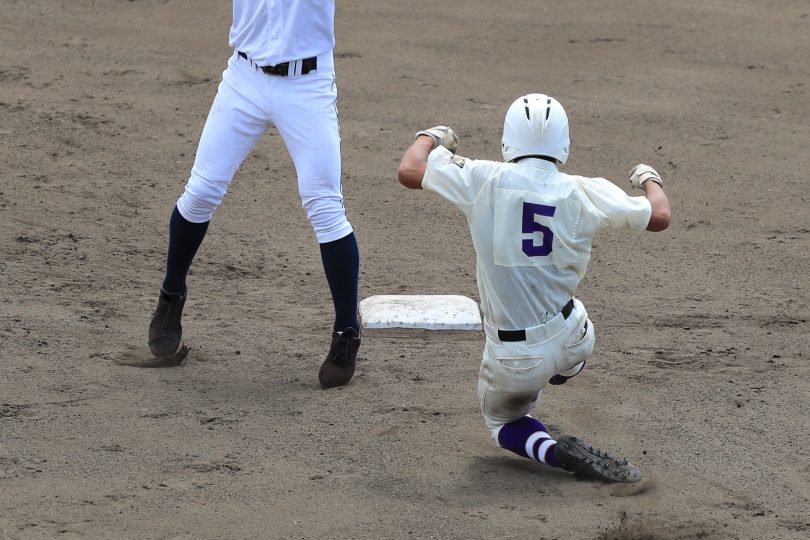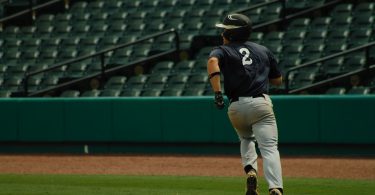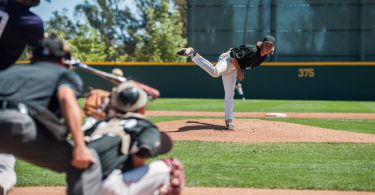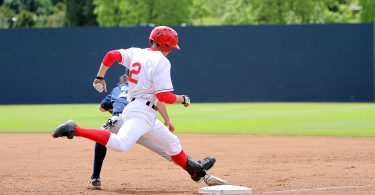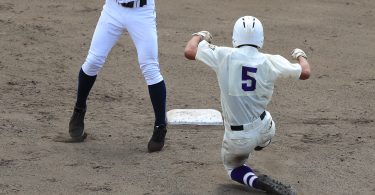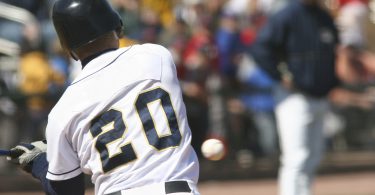The Situation:
There are runners on 1st and 2nd with 1 out in the bottom of the 7th inning. It’s a 2-2 ballgame, and there is a 1-2 count on the left-handed hitter who faces off against his right-handed counter-part.
The Play:
The pitcher gets his sign and comes set. He looks to 2nd once, twice, freezes the runners’ momentum, and delivers the pitch. The speed of the change-up does not fool the hitter and it catches a little too much plate. The lefty slaps a hard sinking line drive into the 5-6 hole. The third baseman retreats to 3rd base, straddling the bag, while the shortstop goes after the ball. In a remarkable display of range, the shortstop dives fully extended and picks the ball on a short-hop in the hole. He gets to his knees, gathering the ball and makes an accurate hard throw to 3rd base.
The Outcome:
The throw arrives to the left field side of the base just as the runner is sliding in. The third baseman slides over, right foot on the base, left foot on the foul line about shoulder width apart. It’s a bang-bang play, but the umpire feels that the runner’s foot gets in just before the ball is secured and calls the runner safe. The slide carries the runner in-between the third baseman’s legs and he topples over with the ball in glove. The runner’s slide was right over the top of the bag and he holds the base, maintaining his safety.
What Went Wrong:
There is a lot of good in this play. The pitcher stopping the momentum of the runner at second (pre-pitch) is great. Obviously the play by the shortstop is fantastic. The third baseman’s savvy to anticipate the only play on the infield and get back to cover the bag is also a veteran move. There is, however, one place where the third baseman goes wrong and it is the difference between the runner being out or safe at third. Can you guess what it is?
When the third baseman gets to the bag, he straddles it and watches the play develop. As the play develops, he slides to the left field side of the base, but doesn’t cut the distance of the throw as he is receiving the ball. In this situation, he must understand the importance of cutting the time of the ball in flight. Fractions of a second make the difference here. Instead of just sliding to the outside, he needs to slide over, anchor the outside of the bag with his right foot and stride to the ball like a first baseman. Think about how much time this cuts down. It also helps give the receiver more range to catch the ball before it has a chance to hit the runner who is sliding in, should the throw have been more at the center of the base.
We see this play happen a lot at second when a middle infielder stops the ball on a dive and flips to the off infielder covering the bag. The receiving middle infielder will become a first baseman of sorts, stretching to the ball and securing the out when he knows that he has no shot at the double play. This is a lesson the third baseman learns the hard way. Next time, he’ll be sure to think the game and stretch to the ball.

